Is your pool vacuum not picking up dirt as efficiently as it should? Adequate suction is crucial for a pool vacuum to function effectively. If you’re experiencing weak suction or your pool vacuum leaves dirt behind, it’s time to investigate and resolve the issue.
Well, we’ll be going over:
- Various strategies can be used to increase the suction power of your pool vacuum.
- How to troubleshoot common issues that might lead to reduced suction in pool vacuums.
- Maintenance tips to ensure your pool vacuum consistently operates with optimal suction.
Let’s dive in and explore these 11 ways to enhance your pool vacuum’s suction, ensuring your pool remains clean and inviting for every swim session.
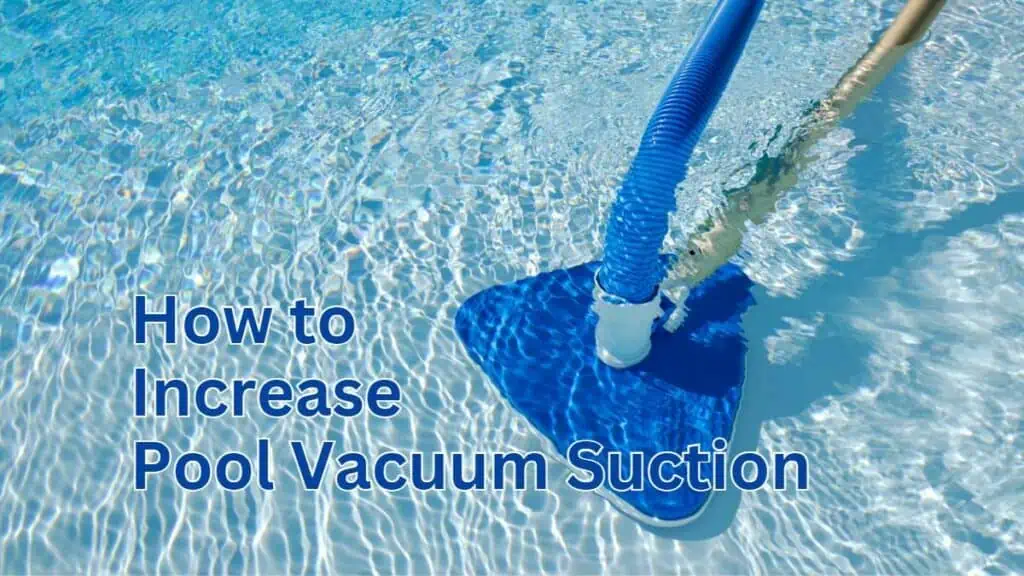
To increase pool vacuum suction, ensure cleanliness and proper functioning of key components:
- Clean Skimmer and Pump Strainer: Remove debris for unobstructed water flow.
- Check Vacuum Hose: Ensure no clogs or leaks are present.
- Adjust Pool Pump Settings: Optimize water flow for stronger suction.
- Inspect Vacuum Head and Brushes: Clean and maintain for efficiency.
- Use Valve Adjustments: Increase suction by closing valves to other skimmers or main drains.
- Utilize a Tennis Ball: Block the additional skimmer to redirect suction.
- Set Variable Speed Pump High: Higher settings yield stronger suction.
- Clear Vacuum Head Blockages: Remove debris, such as leaves.
- Backwash or Clean Filters: A clogged filter reduces suction.
- Empty Pump Strainer Basket: Full baskets hinder water flow.
- Release Air from Filter: The air relief valve eliminates trapped air.
Regular maintenance and addressing these factors can significantly enhance your pool vacuum’s suction capability.
How to increase pool vacuum suction
It is not unusual when you plug a pool vacuum hose into the skimmer for the suction in that skimmer to reduce but increase in the other skimmer or skimmers. This may mean there is insufficient suction for the pool vacuum to work efficiently.
To increase the suction in the skimmer, you are using to vacuum from there are two ways you can increase it which are:
Close skimmer/main drain valves
If you have separate valves to control the flow to each skimmer, then you can close the valve to the other skimmer or skimmers. This will increase the suction to the skimmer that the vacuum is attached to.
Also, you can close the main drain valve if it is open to increase skimmer suction.
Using a tennis ball
If you do not have separate valves to turn off/on individual skimmers, which is the case with my pool, then you can use a tennis ball or some other relatively hard ball larger than the hole at the bottom of the skimmer.
With the pool pump running, push the ball down into the skimmer until the suction pulls it into the hole entrance and seals it. The suction will now be significantly higher through the vacuum hose, allowing you to remove all the debris on the bottom.
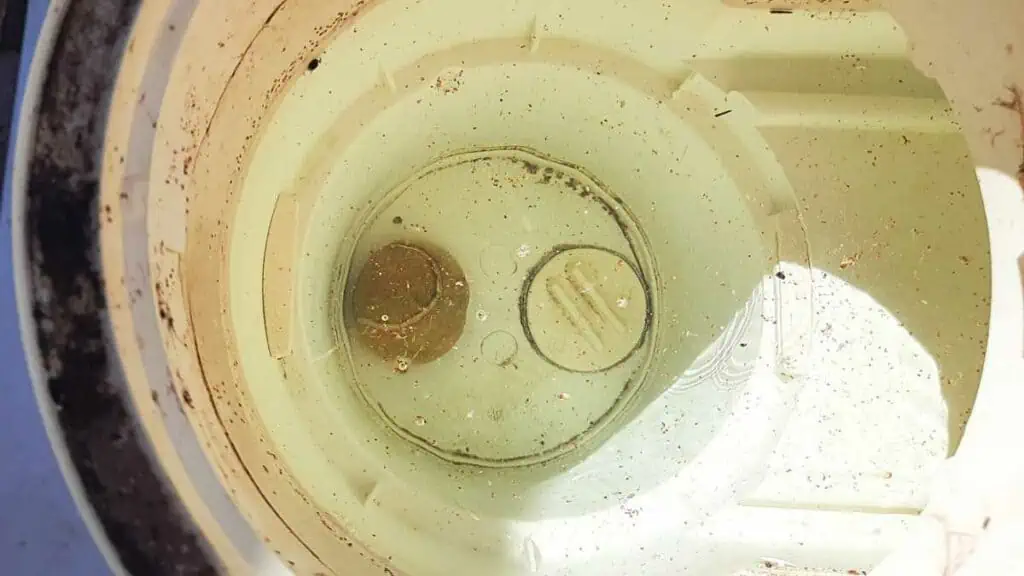
WARNING: Ensure the ball is not too small or soft; otherwise, it may be sucked into the pipe. A tennis ball works well in my setup.
Checking for problems
If your pool pump has low suction, meaning you have insufficient suction in your pool vacuum, particularly if it suddenly occurs while you are vacuuming, then make sure that there are no problems in the system by checking the following:
Variable speed pump on high
This may sound obvious, but if you have a variable speed (VS) pump, then check that it is on the high setting, as it will create less suction on the low setting.
Vacuum head
A sudden reduction in pool vacuum power could be as simple as a problem with your vacuum head. Check that there are no blockages in the pool vac head, such as leaves or other large debris trapped underneath.
Vacuum hose
Two things may be causing reduced suction in a pool vacuum hose:
- If many leaves have been vacuumed, a blockage could be somewhere along the hose. Fortunately, with many semi-see-through vacuum hoses, you can easily see if this is the case.
- The hose could have a split or hole in it, which could mean either air is being sucked in at a point where the hose is out of the water, or it could be sucking in water if in the pool. Both would reduce the suction in the vacuum head.
Skimmer basket (if using a skimmer plate)
If you have plugged the vacuum hose directly into the skimmer, you will have removed the skimmer basket so this will not be an issue.
However, if the vacuum hose is plugged into a skimmer plate fitted above the skimmer basket, other large debris will have been trapped in the basket as you vacuum leaves. If this becomes too full, then it will cause a reduction in the suction.
You need to remove the basket and empty it.
Backwash/clean filters
I sometimes experience a loss of suction while vacuuming my pool on the filter setting when the bottom is quite dirty but not so dirty that I must vacuum to waste.
The filter starts to get clogged, meaning the pump has to work harder to push the water through the filter, the filter pressure increases and the suction reduces.
To rectify the situation, I must stop vacuuming and backwash the filter. If you are unsure how to do this, please refer to How to backwash a pool sand filter.
Pump strainer basket
Particularly if you are not vacuuming using a skimmer plate (when leaves etc will be trapped in the skimmer basket) and large debris such as leaves will pass through the skimmer pipework and be trapped in the pool strainer basket to prevent them from clogging the pool pump.
This basket is generally quite small so that it can become full quickly, and when it does, it restricts the flow of water to the pump. You must turn off the pump, remove the strainer lid and empty the basket.
If you are unsure how to do this then read my post How to empty a pool strainer basket.
Air in the filter
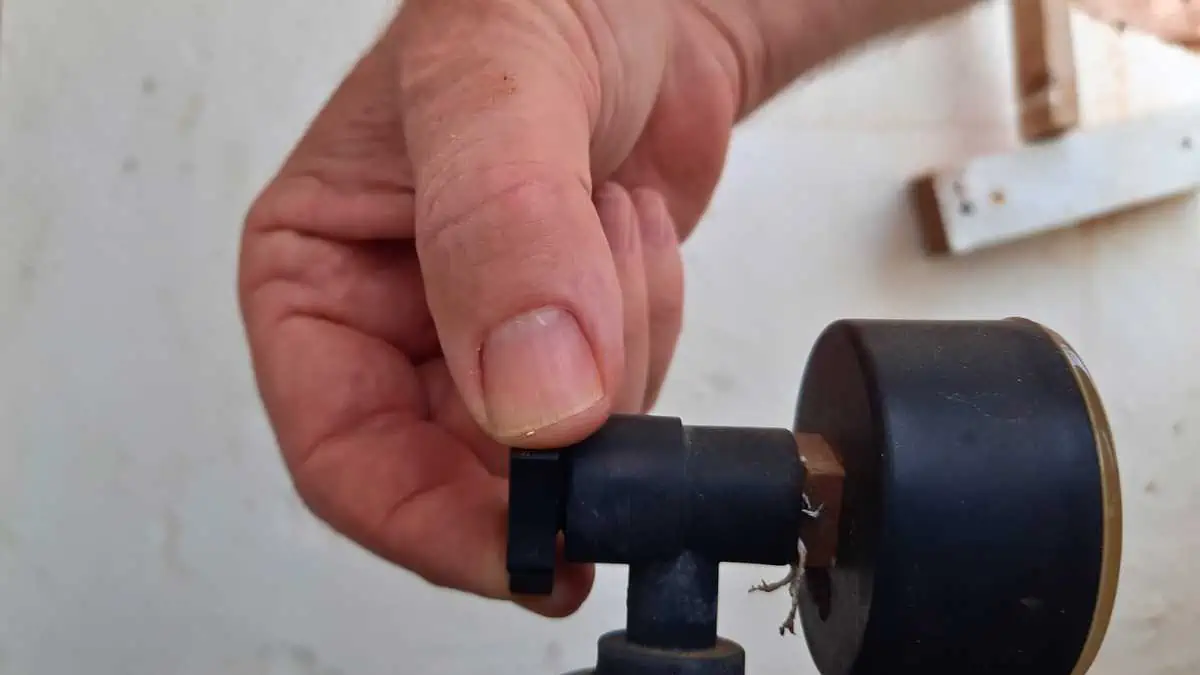
Air can be trapped at the top of the sand filter housing, and if sufficient air accumulates there, it will affect the suction.
Most sand filter housings will have an air drain valve at the top, perhaps behind the pressure gauge.
- Turn the knob anticlockwise until you either hear hissing air coming out. Continue until water starts to stream out constantly, then close the valve.
- If water streams out immediately after you turn the knob, then there is no air in the system.
Air lock in pump
The pool pump cannot pull water through the skimmer/s if it has an airlock. You should be able to tell if there is an airlock:
- the pump will make a different noise than normal
- if you look through the transparent lid of the pool pump strainer housing, you should see the air there.
In this post, you will find various ways to prime a pool pump.
You can help prevent getting an airlock when setting up your vacuum by removing the air from your vacuum hose before you start to vacuum.
Skimmer line blockage
If everything else appears correct, you may have a blockage somewhere in the line from your skimmer to the pump.
I find the best way to test this is to shut off the pool pump, take off the lid of the strainer housing and remove the basket. Then, push a hose into the pump inlet and turn it on full.
If water flows out of the hole in the skimmer easily, then it is unlikely there is a blockage.
However, if little or no water comes out (and flows back into the pump housing), then you probably have a blockage that could be caused by debris or a collapsed flexible pipe (as I had a few years ago).
Hopefully, if the line is blocked with leaves and other debris, the backflow of water will clear these, and whatever is blocking the line will come floating up in the skimmer.
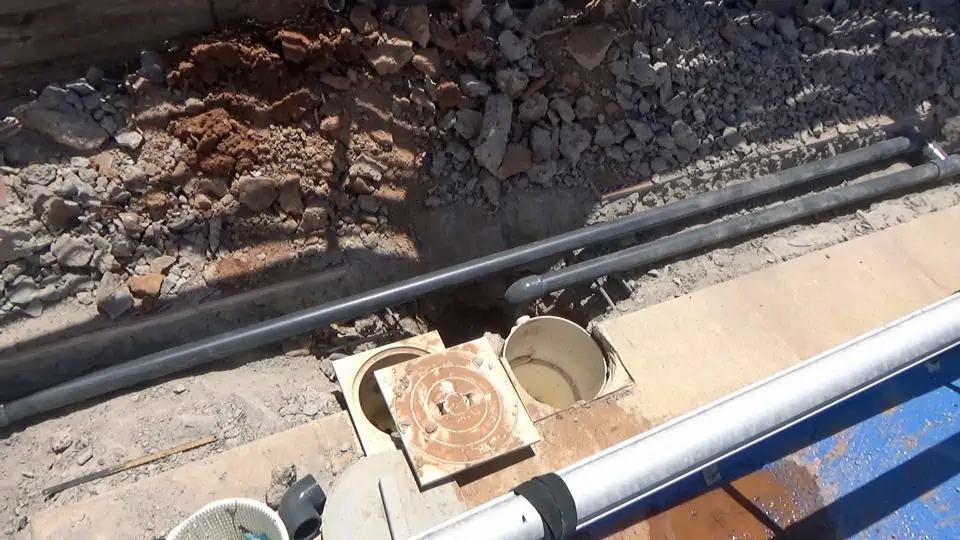
The pool pump impeller clogged
You may have reduced suction if something caught in the pool pump impeller is perhaps not fully preventing the impeller from turning (in which case you would have no water flow) but something smaller, such as a small twig trapped and slowing the impeller. I have had this happen twice.
To check the impeller, remove the strainer basket in most pool pumps and put a finger in the hole towards the pump. You should be able to feel the impeller, which should spin freely if not blocked. If you feel anything trapped, then try to remove it.
What if you lose suction while vacuuming
Pool pump loses pressure when vacuuming on filter
It can often happen if you vacuum your pool with the multiport valve on the filter setting, particularly when the pool is quite dirty but not dirty enough to vacuum to waste.
If this happens, it is likely to be one of three things:
- The most likely cause is that the filter is clogged, so you should stop vacuuming. If it is a sand filter, you should backwash; if it is a cartridge filter, the filter/s should be removed and cleaned.
- The pool pump strainer basket may be clogged with leaves or debris, so clean it out to restore suction.
- If you are vacuuming using a vacuum plate, so the skimmer basket is still in place, you may have reduced suction due to that being full and blocked.
Low suction when vacuuming to waste
If you suddenly have low suction when vacuuming to waste, the strainer basket is probably full, preventing sufficient water from reaching the pool pump. So turn off the pump and then empty the pump strainer basket.
If you use a vacuum plate in the skimmer to hook up the vacuum hose, the skimmer basket may need emptying.
Summary
Are you frustrated with your pool vacuum not picking up dirt? Have you noticed a lack of suction or even no suction at all? It’s time to address these pool suction problems and find a solution!
One common issue that pool owners face is a pool vacuum not sucking properly. This can be caused by various factors, such as a clogged or dirty filter, an improperly adjusted pool skimmer suction, or even a lack of enough suction power from the vacuum cleaner.
If you find yourself in a situation where your pool vacuum has no suction, the first step is to check the filter. A clogged or dirty filter can greatly reduce suction power, so clean or replace it if necessary. Additionally, inspect the pool vacuum hose for any blockages or obstructions that impede its suction capabilities.
Another factor to consider is the pool skimmer suction. If the suction from the skimmer is not properly adjusted, it can impact the overall suction power of the vacuum. Adjusting the pool skimmer suction can help increase the vacuum cleaner’s effectiveness in picking up dirt and debris from the pool.
Remember, maintaining proper suction is crucial for a clean and inviting pool. By addressing any issues such as a pool vacuum not having enough suction, no suction on the pool vacuum, or my pool vacuum having no suction, you can ensure that your pool stays clean and debris-free.
FAQs
Why is my pool vacuum suction weak?
Pool vacuum suction can become weak for various reasons. This might be due to blockages in the hose, leaks, a dirty filter, or problems with the pool pump. Regular maintenance and cleaning can help avoid these issues.
Can a dirty filter affect my pool vacuum’s suction?
A dirty filter can significantly impact your pool vacuum’s suction. If the filter is clogged, water can’t pass through it efficiently, which reduces the suction. Cleaning or replacing your pool filter can improve suction.
What should I do if there’s air in my pool vacuum system?
Air in your pool vacuum system can cause weak suction. You can remove air by ensuring the hose is filled with water before connecting it to the skimmer. Also, check for leaks in the hose or connections as these can allow air to enter the system.

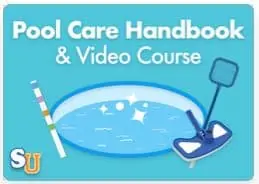




Leave a Reply